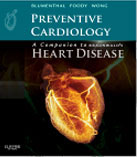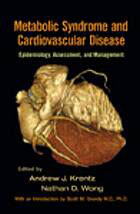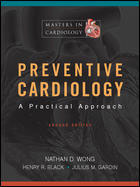Textbooks
Nathan Wong's textbooks include:
 |
Preventive Cardiology:
This new companion to Braunwald's Heart Disease addresses the prevention and risk stratification of cardiovascular disease so that you can delay the onset of disease and moderate the effects and complications. Drs. Roger Blumenthal, JoAnne Foody, and Nathan Wong discuss the full range of relevant considerations, including the epidemiology of heart disease, risk assessment, risk factors, multiple risk factor-based prevention strategies and developments in genetics and personalized medicine. With access to the fully searchable text online at www.expertconsult.com, this authoritative reference gives you the clinically relevant information you need for the effective prevention of cardiovascular disease.
|
 |
Metabolic Syndrome and Cardiovascular Disease:
This text addresses the epidemiology, diagnosis, assessment, and management of patients with metabolic syndrome, focusing on implications for cardiovascular disease risk. The book contains an abundance of clearly organized tables, flowcharts, and practice guidelines and succinctly analyzes recent clinical trials, compares and assesses recent and emerging therapies, and provides recommendations for the improved assessment and treatment of patients, while supplying a state-of-the-art overview of approaches to optimize and enhance patient care.
|
 |
Preventive Cardiology:
Authoritative information and practical guidance in screening for and preventing cardiovascular disease (CVD). Coverage includes:
- Preventing heart disease in specific populations, including women, seniors, children and adolescents, African Americans, Hispanic Americans, Asian populations and Native Americans.
- Assessing risk factors, and how such elements as genetics, obesity, nutrition, physical activity, psychosocial factors, and thrombosis play a part in CVD outcomes.
- Noninvasive techniques for measuring subclinical disease, from exercise testing and coronary calcium screening to MRI and ultrasound.
- Practical strategies for primary and secondary prevention of CVD
|



